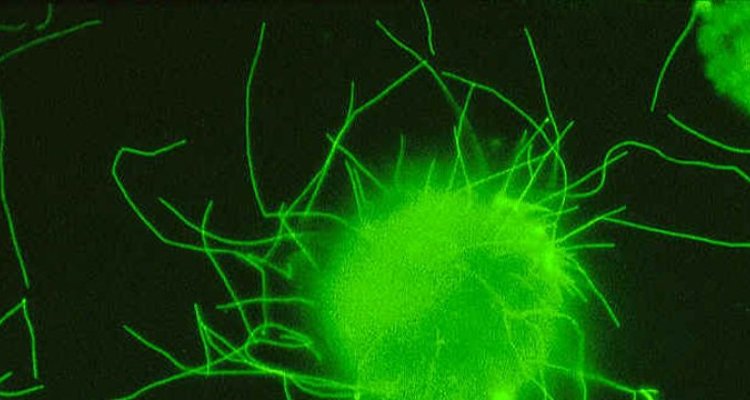
News
Discovery by virologists may have far-reaching consequences
Virologists at Wageningen University have discovered an important phase in the formation of plant viruses that are surrounded by a membrane. Because the plant virus studied also has ‘family members’ that can cause disease in humans and animals, the discovery by Wageningen researchers can be used as a basis for limiting or perhaps even completely blocking the multiplication of these kinds of viruses, for example through the development of new medicines.
The discovery could be important for virologists working in a wide variety of fields, such as in academic hospitals and in companies that develop medicines that prevent the formation and spreading of these kinds of viruses. For this reason the results were published in the renowned scientific journal The Plant Cell.
Endoplasmic reticulum (ER)
Within each plant or animal cell there is a network of sacs and canals surrounded by membranes, the endoplasmic reticulum (ER). The main function of the ER is to modify and transport all kinds of substances through the cell. To do this these substances must first be made in or enter the ER and then also leave the ER again somewhere in the cell, so that they can be used in that location within the cell.
Export route discovered
Viruses infect plant and animal cells and multiply within these cells. During this process a number of viral proteins must be made and modified in the ER before new viruses can be made. It had already been established that the ER plays a very important role in the construction of new viruses, but how this precisely works was largely unknown. Virologists at Wageningen have now discovered an export route from the ER that is vital for the construction of viral particles. The proteins necessary to build new viral particles may only leave the ER via special openings in the ER membrane. These openings are only made when sufficient structural protein has been manufactured in the ER and when two viral proteins are involved. One of these two proteins acts here as a kind of ‘control protein’, as it controls the export route and therefore the generation of new viral particles.
The research was co-funded by the EU, within the framework of the EU Research Training Network for research on plant endomembrane systems.